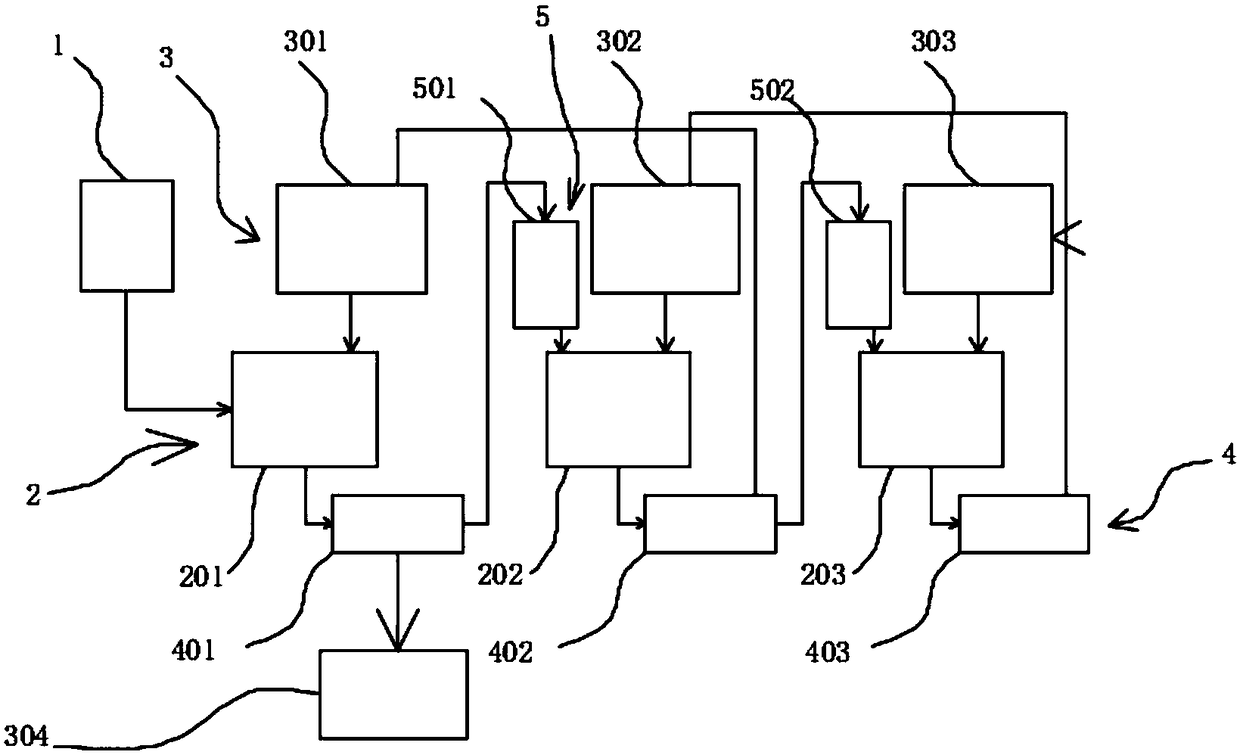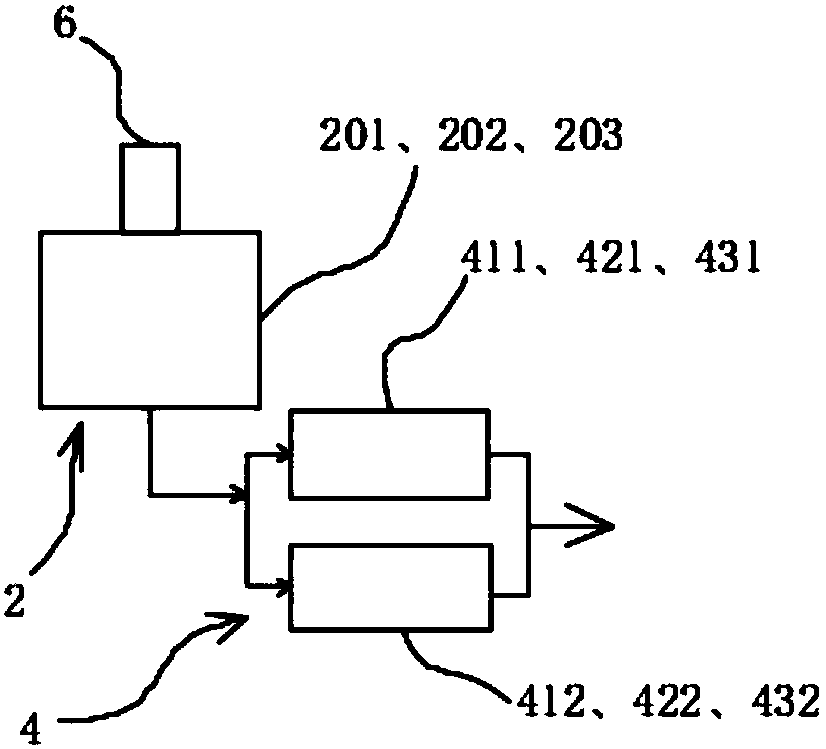Garbage fly ash recycling treatment process
A technology of waste fly ash and treatment process, applied in water/sewage treatment, heating water/sewage treatment, neutralized water/sewage treatment, etc. products, the effect of improving utilization
- Summary
- Abstract
- Description
- Claims
- Application Information
AI Technical Summary
Problems solved by technology
Method used
Image
Examples
Embodiment 1
[0042] A waste fly ash resource utilization treatment process, the steps are as follows:
[0043] S1 water elution chlorine, the waste fly ash is removed chlorine element in the fly ash by the water elution chlorine process, and the water washing process obtains chlorine-containing washing wastewater; the water washing process is three-stage countercurrent washing; details are as follows:
[0044] The specific steps of the washing process are as follows:
[0045] Step 1. The fly ash storage tank 1 transports the fly ash to the primary cleaning tank 201 and mixes it with the water in the first storage tank 301. The ratio of fly ash to water is 1:1; aerate and stir for 10 minutes, and then use the first stage The filter press 411 and / or the second stage filter press 412 perform press filtration, the filtrate enters the reaction storage tank 304, and the fly ash sludge enters the second sludge pulverizer 501; the ammonia absorption tower 6 uses water as an absorbent to absorb amm...
Embodiment 2
[0062] A waste fly ash resource utilization treatment process, the steps are as follows:
[0063] S1 water elution chlorine, the waste fly ash is removed chlorine element in the fly ash by the water elution chlorine process, and the water washing process obtains chlorine-containing washing wastewater; the water washing process is three-stage countercurrent washing; details are as follows:
[0064] The specific steps of the washing process are as follows:
[0065] Step 1. The fly ash storage tank 1 transports the fly ash to the primary cleaning tank 201, and mixes it with the water in the first storage tank 301. The ratio of fly ash to water is 1:2; aerate and stir for 20 minutes, and then use the first stage The filter press 411 and / or the second stage filter press 412 perform press filtration, the filtrate enters the reaction storage tank 304, and the fly ash sludge enters the second sludge pulverizer 501; the ammonia absorption tower 6 uses water as an absorbent to absorb am...
Embodiment 3
[0082] A waste fly ash resource utilization treatment process, the steps are as follows:
[0083] S1 water elution chlorine, the waste fly ash is removed chlorine element in the fly ash by the water elution chlorine process, and the water washing process obtains chlorine-containing washing wastewater; the water washing process is three-stage countercurrent washing; details are as follows:
[0084] The specific steps of the washing process are as follows:
[0085] Step 1. The fly ash storage tank 1 transports the fly ash to the primary cleaning tank 201 and mixes it with the water in the first storage tank 301. The ratio of fly ash to water is 1:1.5; aerate and stir for 30 minutes, and then use the first stage The filter press 411 and / or the second stage filter press 412 perform press filtration, the filtrate enters the reaction storage tank 304, and the fly ash sludge enters the second sludge pulverizer 501; the ammonia absorption tower 6 uses water as an absorbent to absorb a...
PUM
| Property | Measurement | Unit |
|---|---|---|
| particle diameter | aaaaa | aaaaa |
Abstract
Description
Claims
Application Information
 Login to View More
Login to View More - R&D
- Intellectual Property
- Life Sciences
- Materials
- Tech Scout
- Unparalleled Data Quality
- Higher Quality Content
- 60% Fewer Hallucinations
Browse by: Latest US Patents, China's latest patents, Technical Efficacy Thesaurus, Application Domain, Technology Topic, Popular Technical Reports.
© 2025 PatSnap. All rights reserved.Legal|Privacy policy|Modern Slavery Act Transparency Statement|Sitemap|About US| Contact US: help@patsnap.com


